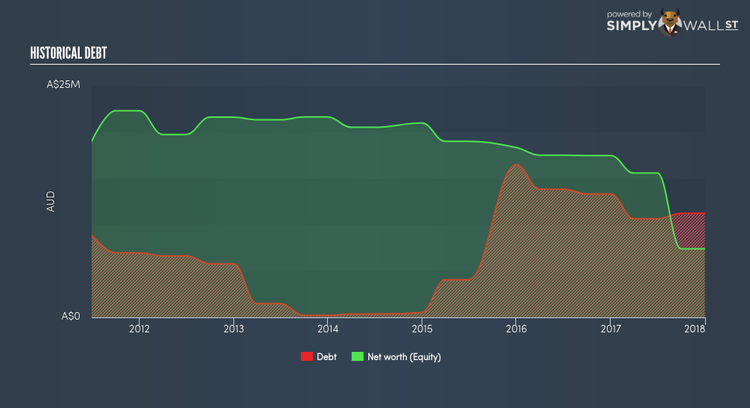Are Kresta Holdings Limited’s (ASX:KRS) Interest Costs Too High?

Investors are always looking for growth in small-cap stocks like Kresta Holdings Limited (ASX:KRS), with a market cap of AU$6.76M. However, an important fact which most ignore is: how financially healthy is the business? Consumer Durables businesses operating in the environment facing headwinds from current disruption, especially ones that are currently loss-making, tend to be high risk. Assessing first and foremost the financial health is crucial. Here are few basic financial health checks you should consider before taking the plunge. However, this commentary is still very high-level, so I recommend you dig deeper yourself into KRS here.
Does KRS generate an acceptable amount of cash through operations?
Over the past year, KRS has reduced its debt from AU$13.32M to AU$11.23M , which comprises of short- and long-term debt. With this reduction in debt, the current cash and short-term investment levels stands at AU$2.65M , ready to deploy into the business. Moving onto cash from operations, its trivial cash flows from operations make the cash-to-debt ratio less useful to us, though these low levels of cash means that operational efficiency is worth a look. For this article’s sake, I won’t be looking at this today, but you can take a look at some of KRS’s operating efficiency ratios such as ROA here.
Does KRS’s liquid assets cover its short-term commitments?
Looking at KRS’s most recent AU$22.12M liabilities, it appears that the company is not able to meet these obligations given the level of current assets of AU$17.50M, with a current ratio of 0.79x below the prudent level of 3x.
Is KRS’s debt level acceptable?
Since total debt levels have outpaced equities, KRS is a highly leveraged company. This is not unusual for small-caps as debt tends to be a cheaper and faster source of funding for some businesses. Though, since KRS is presently loss-making, sustainability of its current state of operations becomes a concern. Maintaining a high level of debt, while revenues are still below costs, can be dangerous as liquidity tends to dry up in unexpected downturns.
Next Steps:
KRS’s high debt level indicates room for improvement. Furthermore, its cash flow coverage of less than a quarter of debt means that operating efficiency could also be an issue. In addition to this, its lack of liquidity raises questions over current asset management practices for the small-cap. This is only a rough assessment of financial health, and I’m sure KRS has company-specific issues impacting its capital structure decisions. I suggest you continue to research Kresta Holdings to get a more holistic view of the stock by looking at:
Historical Performance: What has KRS’s returns been like over the past? Go into more detail in the past track record analysis and take a look at the free visual representations of our analysis for more clarity.
Other High-Performing Stocks: Are there other stocks that provide better prospects with proven track records? Explore our free list of these great stocks here.
To help readers see pass the short term volatility of the financial market, we aim to bring you a long-term focused research analysis purely driven by fundamental data. Note that our analysis does not factor in the latest price sensitive company announcements.
The author is an independent contributor and at the time of publication had no position in the stocks mentioned.

